Rose Datoc Dall
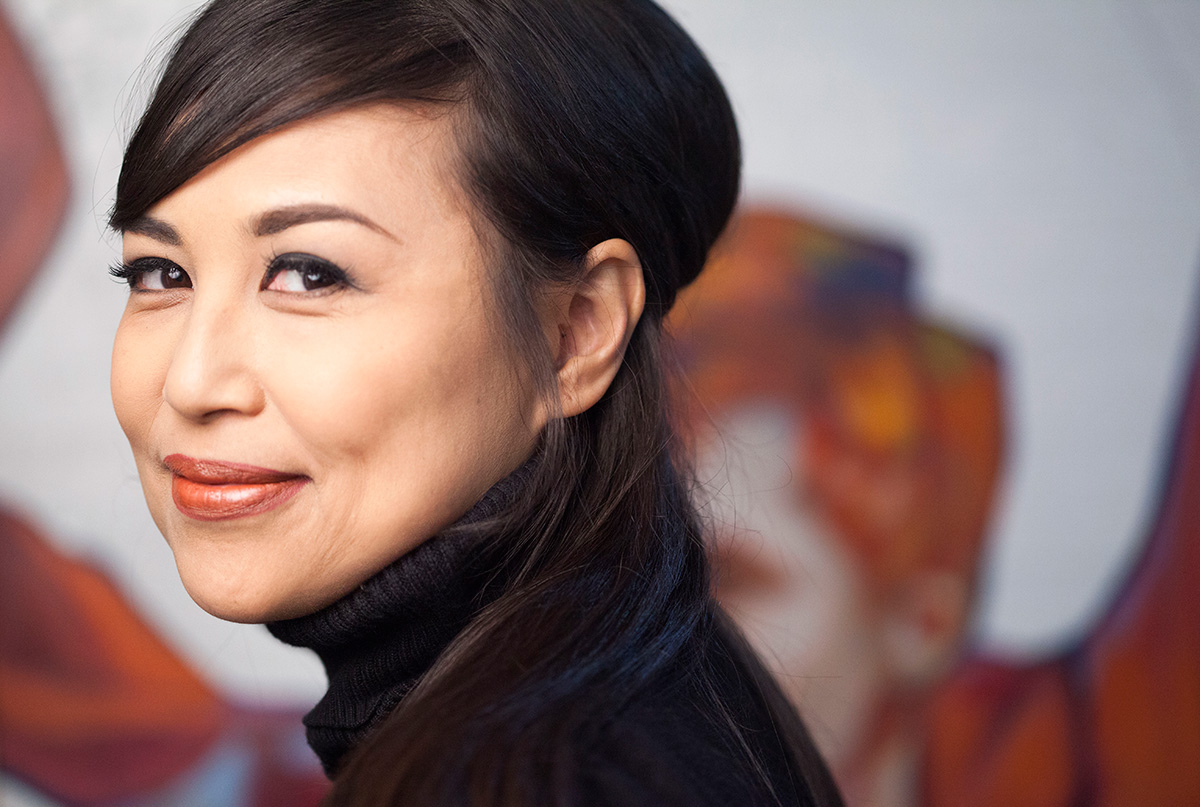
What drew you to art and being a painter?
I think I could always draw ever since I can remember. I taught myself to draw and paint almost entirely all the way through high school, with a couple of high school art classes here and there, but mostly I learned on my own, especially drawing the human figure. But I did not really seriously begin oil painting until college. The minute I picked up a brush in my oil painting class, I took to it like a duck to water. I loved it.
As far as being drawn to it, my background and degree is in art history as well as fine art studio, and my love for art history started with my humanities studies all the way back as a freshman in high school. I am drawn to the masters and I love history in general. I love feeling connected to other artists who have gone before. I like feeling like I am part of a continuum of artists.
What you don’t know is that I am also drawn to film, photography, stage, theatre, dance, music, composing, and voice, having dabbled in all of them. But painting won out. Nevertheless, all those other areas have informed my art and I feel they are all connected.

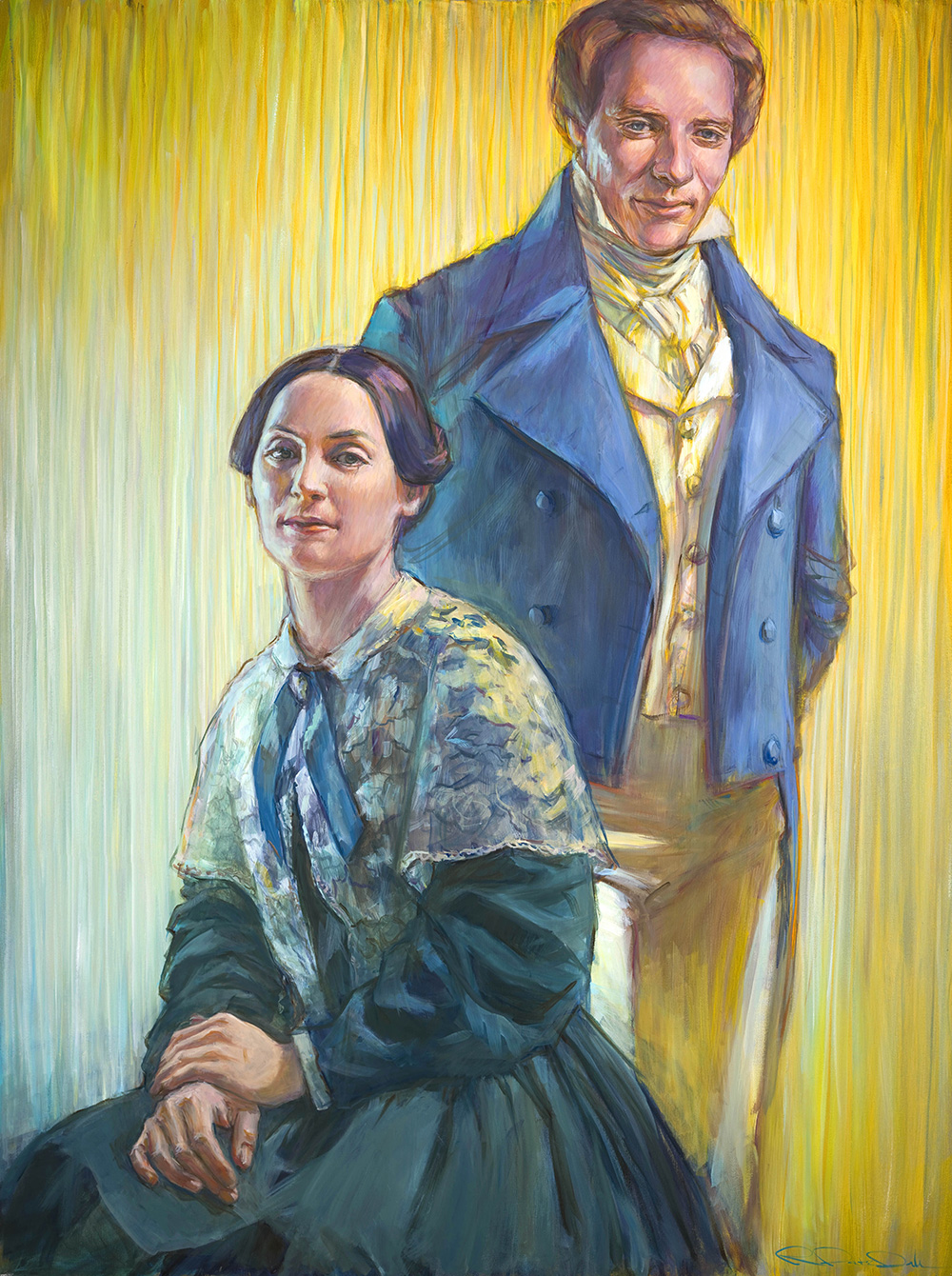
How do you feel painting helps you live the gospel and become more like the Savior?
For sure, painting the subjects that I paint, which are directly or indirectly of a spiritual nature, ultimately becomes a great reason for me to delve into the scriptures and to express what I have learned about gospel principles. In fact, painting is that bridge for me to liken what I learn to my own experience and to crystallize it, internalize it, filter it, and express it.
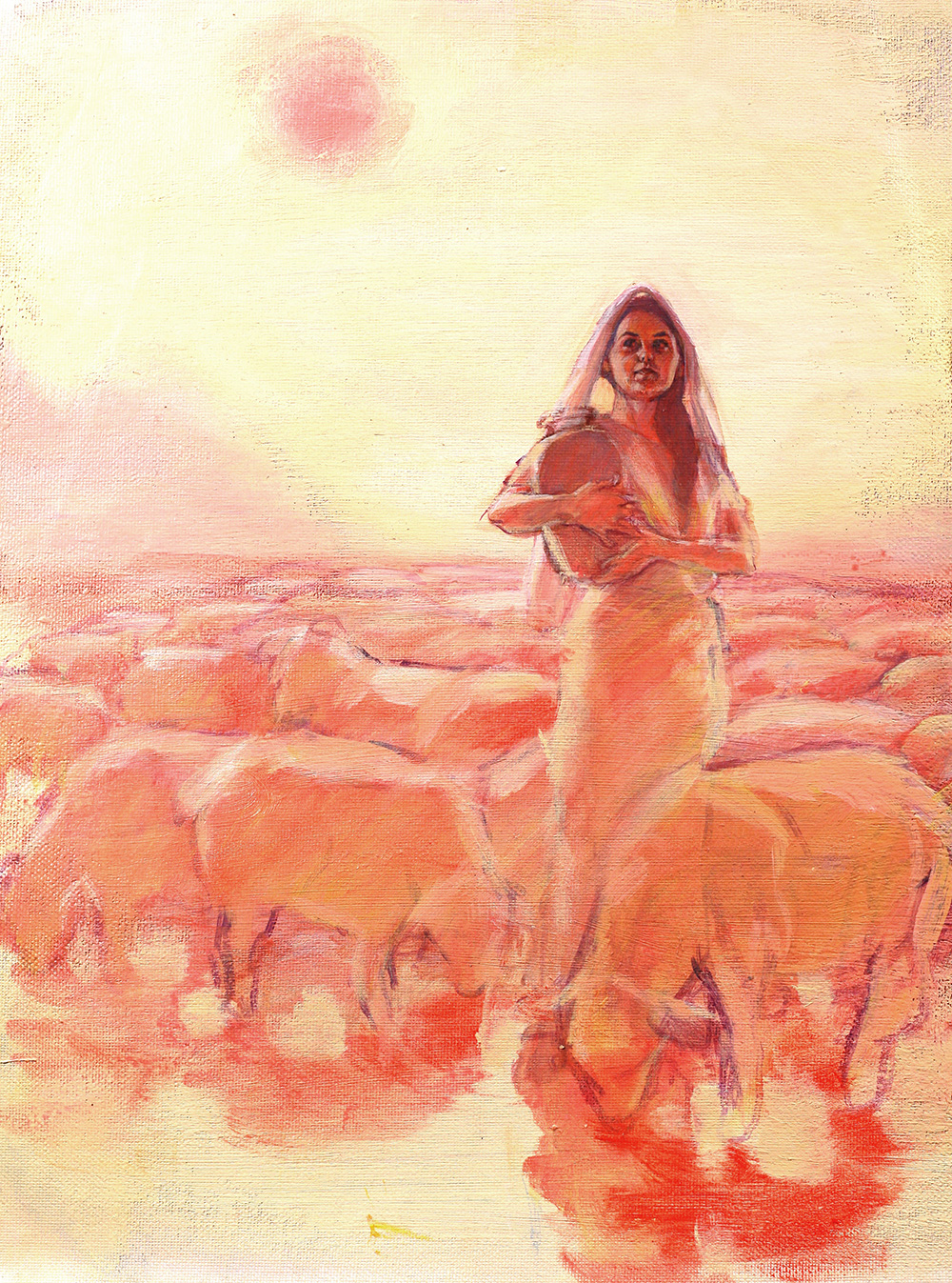
It is interesting to note that I almost draw a complete blank when I try to paint anything purely secular, anything that is not spiritually relevant to me. I hit a wall. The wellspring for me is the scriptures, the gospel, sitting in church meetings, and letting the Spirit distill ideas in me. Invariably, I get many brainwaves for paintings sitting in the middle of sacrament meeting. Of course they occur at other times, but there are several church doodles which became the ideas for paintings.
I often listen to the scriptures and conference talks when I am painting the Savior. It is another level of immersion into the gospel. Everything I research for my paintings is delving into the lives of the people in the scriptures who I paint. Full immersion, full internalization into the subject matter is demanded of being an artist. That is why it is imperative to paint things of a pure nature. In short, I do not take painting lightly.
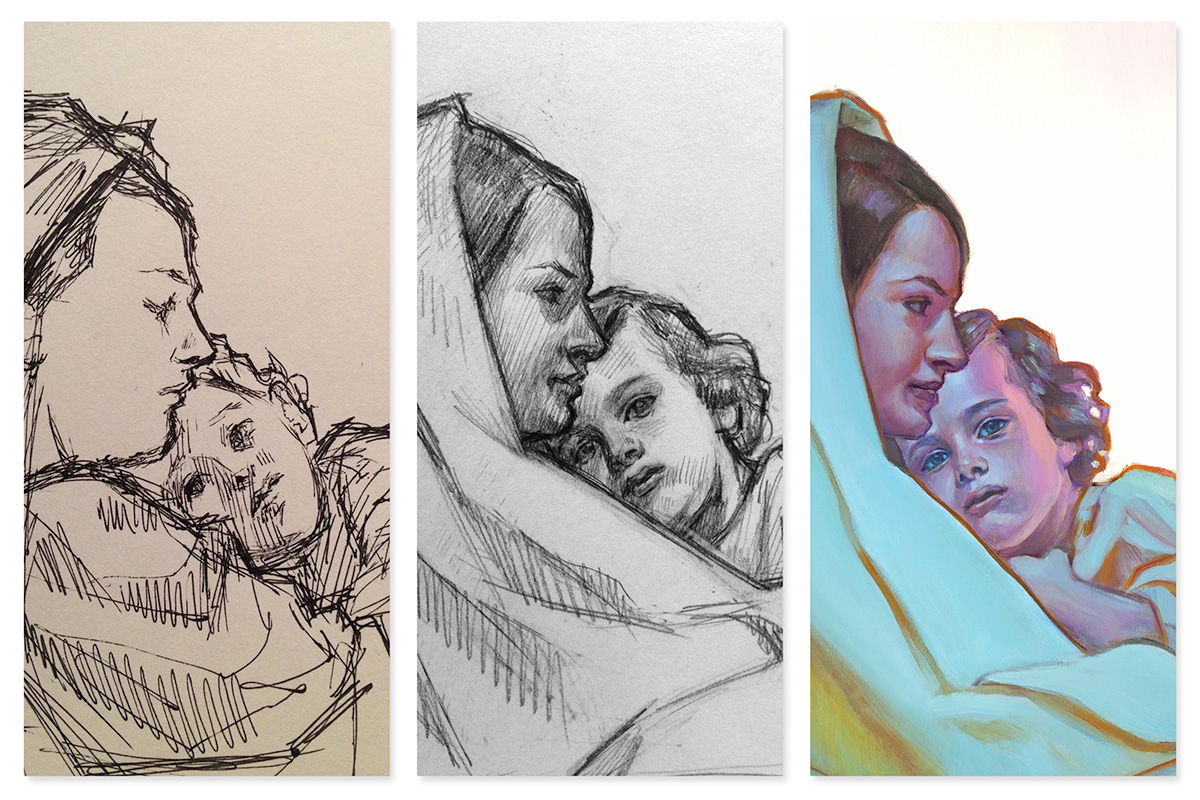

You have stated that you pray when you begin a new project and throughout the creative process. When did you start including prayer as part of your artistic work? How does prayer influence your art?
I really started praying as part of the creative process when I learned that I actually could do just that. It never occurred to me before, being a convert at the age of nineteen, joining as a sophomore in art school at Virginia Commonwealth University School of the Arts (VCU Arts). Prayer was alien to me. And only after a few years of graduating from art school, as a young married mother and as a floundering artist (in the sense that it was hard to fit in art with the demands of early motherhood), did I actually make the connection that I could pray about how to fit art into my life.
At that point, I was ready to give up art, simply because I found that there was little or no time for it; because I wanted to do the right thing and be a mom, I no longer wanted to get frustrated at myself as I watched all my artist friends and their careers pass me by while I was changing diapers. At last, completely fed up, I remember putting my art on the altar, saying, “Thy will be done.” Ironically, the answer that I got was not to put the paintbrushes away entirely, but to trust the Lord’s timing, and not to compare myself to anybody else’s career. The best advice I ever heard.
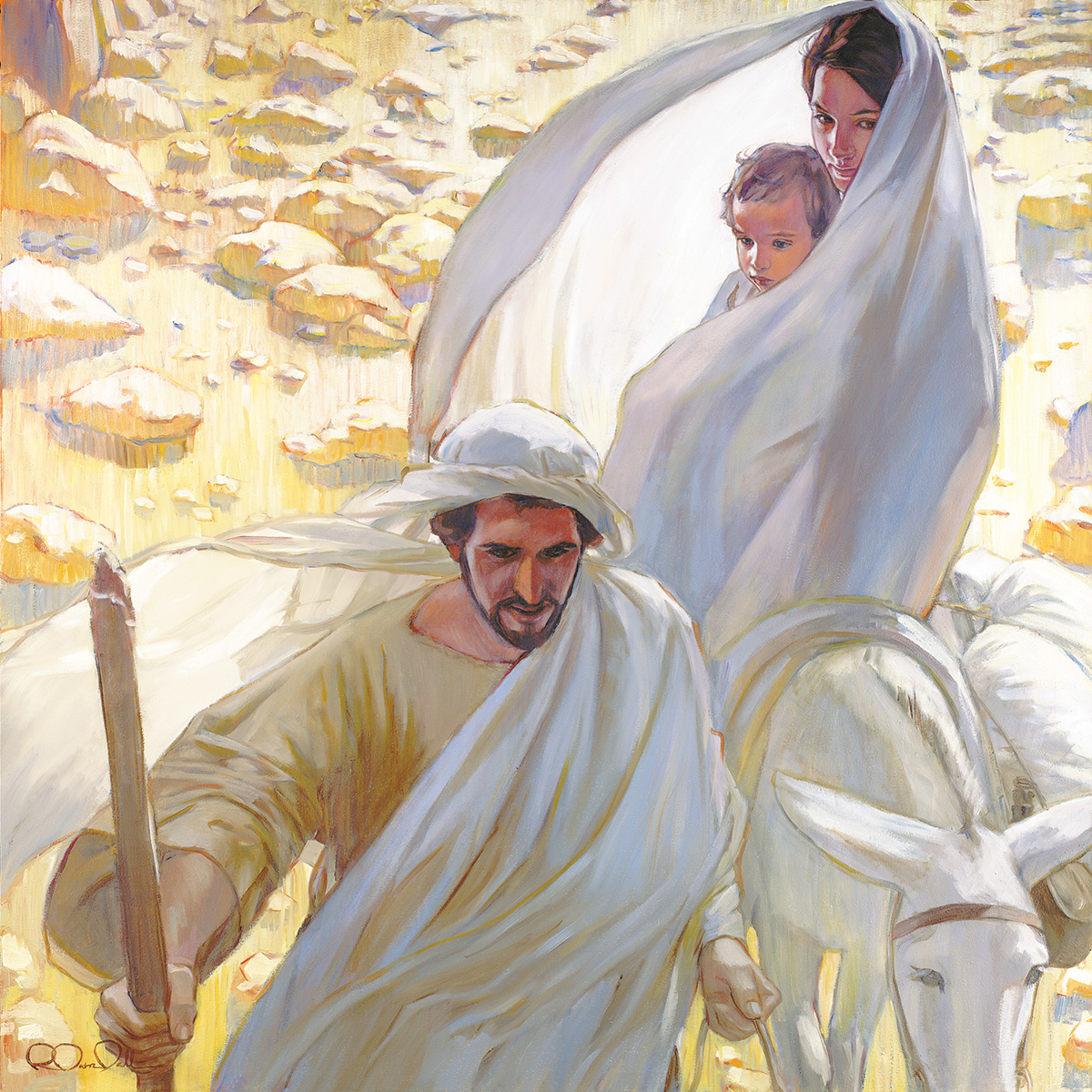
Hence, it was not until I put my deepest desires to be an artist on the altar—to consecrate my talents to him—that doors actually began to open for me. It was about that time that I painted my breakthrough painting, Flight, from which point I can mark when my career began to take off in earnest. Prayer helped me to solidify my approach and to marry both worlds of my contemporary sensibilities and spiritual themes which had eluded me before that point.
Prayer—how does it influence my art? Simply, it is the difference between two scenarios: on the one hand, having the Spirit is like flying, soaring with inspiration, having pure intelligence, making mental connections, and having doors open that I could not have affected on my own, doors beyond my sphere of influence; while on the other hand, without prayer is like being stuck in the mud, hitting walls, and getting frustrated, not even coming close to amazing creative opportunities I could not have fathomed on my own. Prayer has taught me to think outside the box. In short, the Spirit is the biggest accelerator of creativity and ingenuity.
You stated in the documentary for The Early Years of The Savior, A Ten Year Journey that your paintings were reflecting what you learned from the scriptures and from being a mom. How has being married and having children changed your artistic focus?
Being a mom and a wife has totally informed my art. Instead of fighting and serving two masters, so to speak (the LDS family life versus the selfish artist’s life), I learned with Heavenly Father’s help how to embrace being a mom, to be fully vested in my kids with all the struggles that come with mothering, and dovetail in my life as an artist. The art therefore did not come at once, but as drops in the bucket here and there. I learned to be more forgiving of myself and not put any undue deadlines on myself about what I wanted to accomplish as an artist. I learned, as I said before, not to compare my career to anyone else’s. I often just went on faith day to day, often having long spells of not picking up a brush for months, due to births, raising kids, demanding church callings, kids’ activities, health, etc. And I learned to be okay with whatever life threw at me and just roll with it. I learned not to let the challenges of motherhood weigh me down, and I quit telling myself I was missing out on something. I never was. My biggest regret is that I did not learn all of this much earlier. I would have saved myself a lot of frustration.
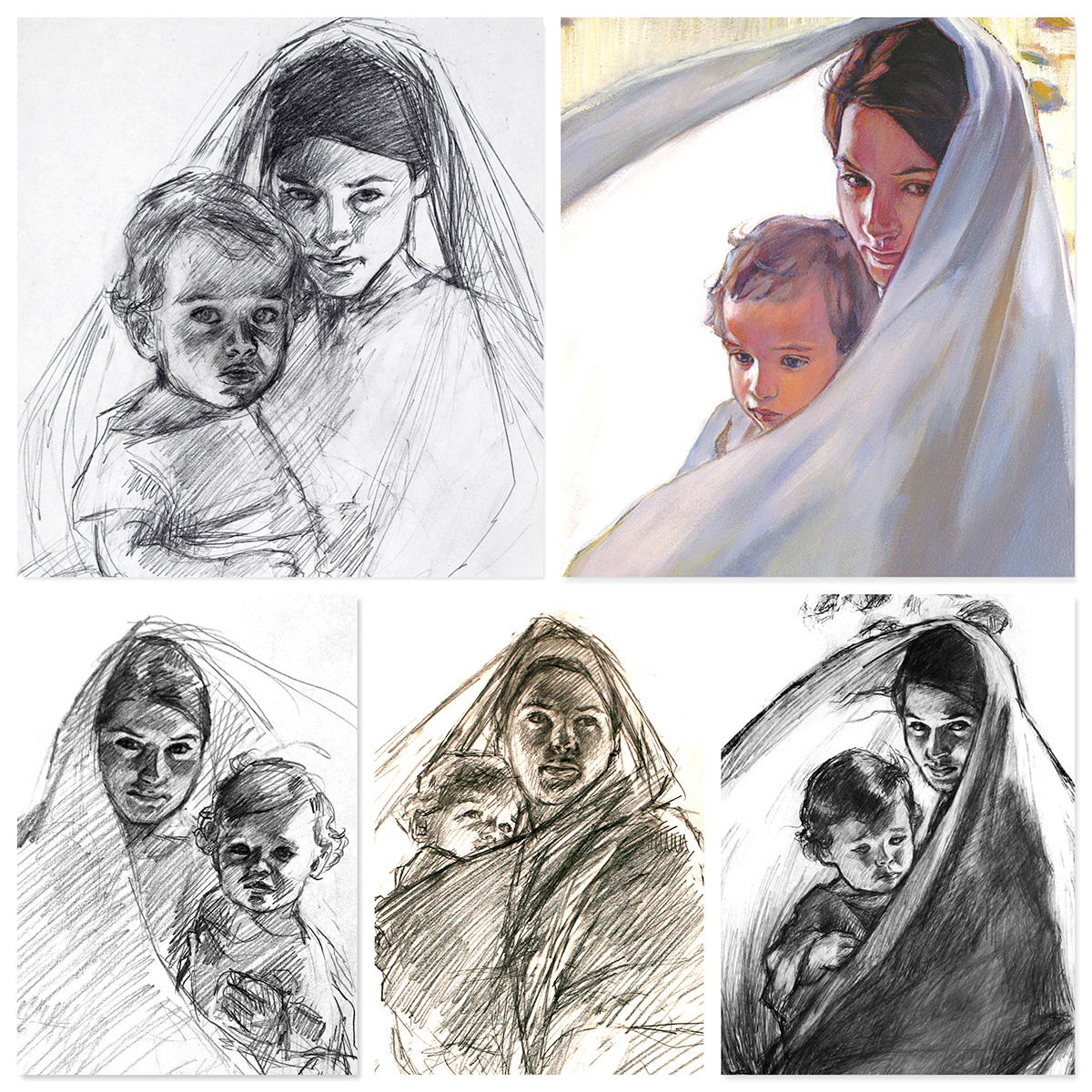
Because painting was sporadic, especially when the kids were young, I then focused on artistic concepts that would be able to sit in the oven for a while, ones that would keep until I could get to them. Even if I was not behind the canvas, my brain was planning, letting principles crystallize which ultimately made them stronger concepts because they were the ones which stood the test of time and were fully internalized by the time I got to canvas.
And as one can tell, I let that perspective of being a mom, a woman, and a Latter-day Saint inform my art, as well as my love of children. They are the substance which give my art the depth and perspective that it has.
In the world of art, what do you wish more people would produce? How has this feeling influenced what you choose to paint?
I am not sure what I would want the world to produce except that I wish more would openly make the connection of using the Spirit as a means of enhancing creativity. For me, having grown up and gone to art school in this world as a nonmember, it is wholly alien to the world that the Spirit is a tremendous tool. It removes the “me” factor and it becomes a less selfish thing. I wish more artists embraced the Holy Ghost as a viable artistic companion.
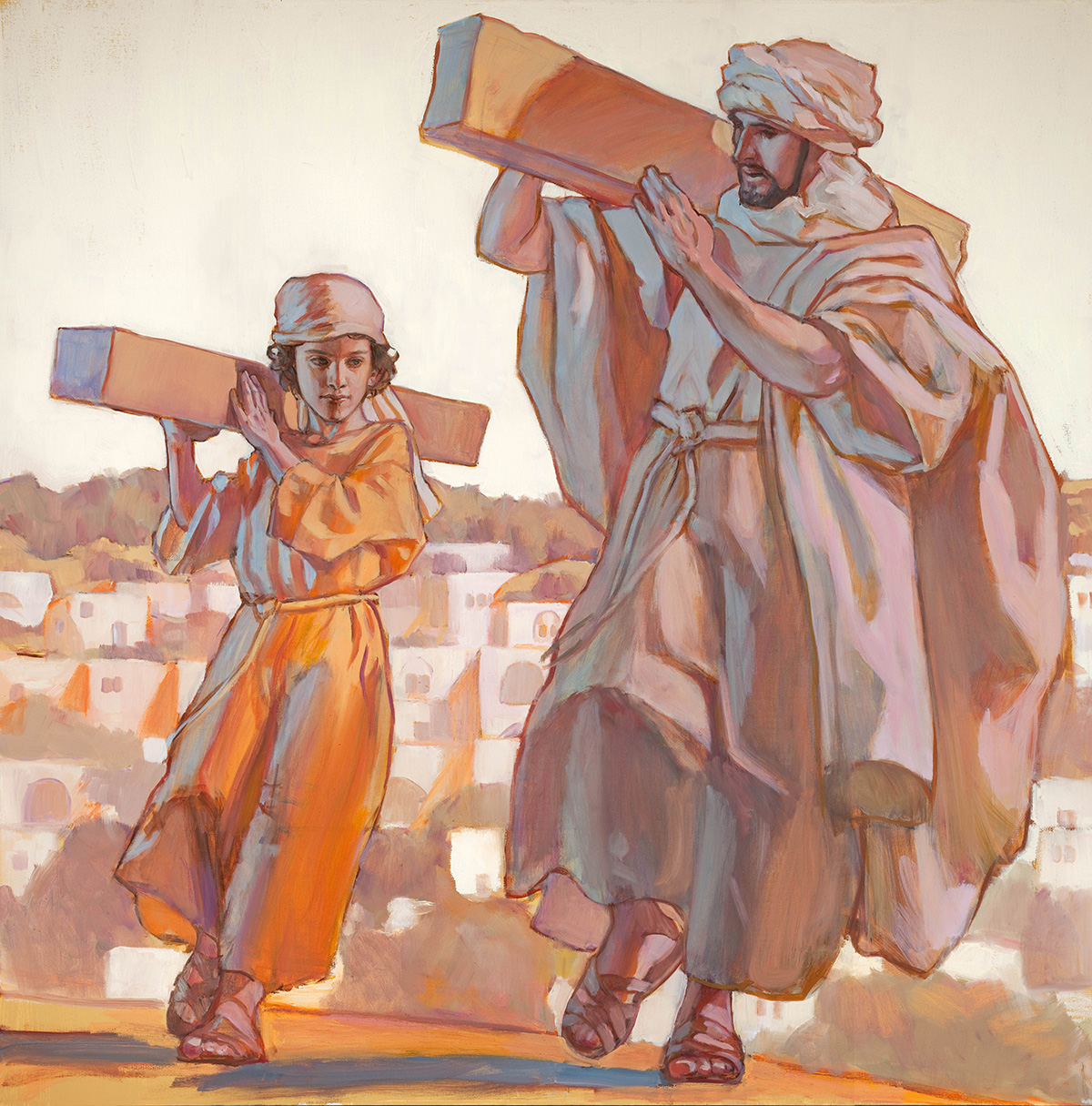
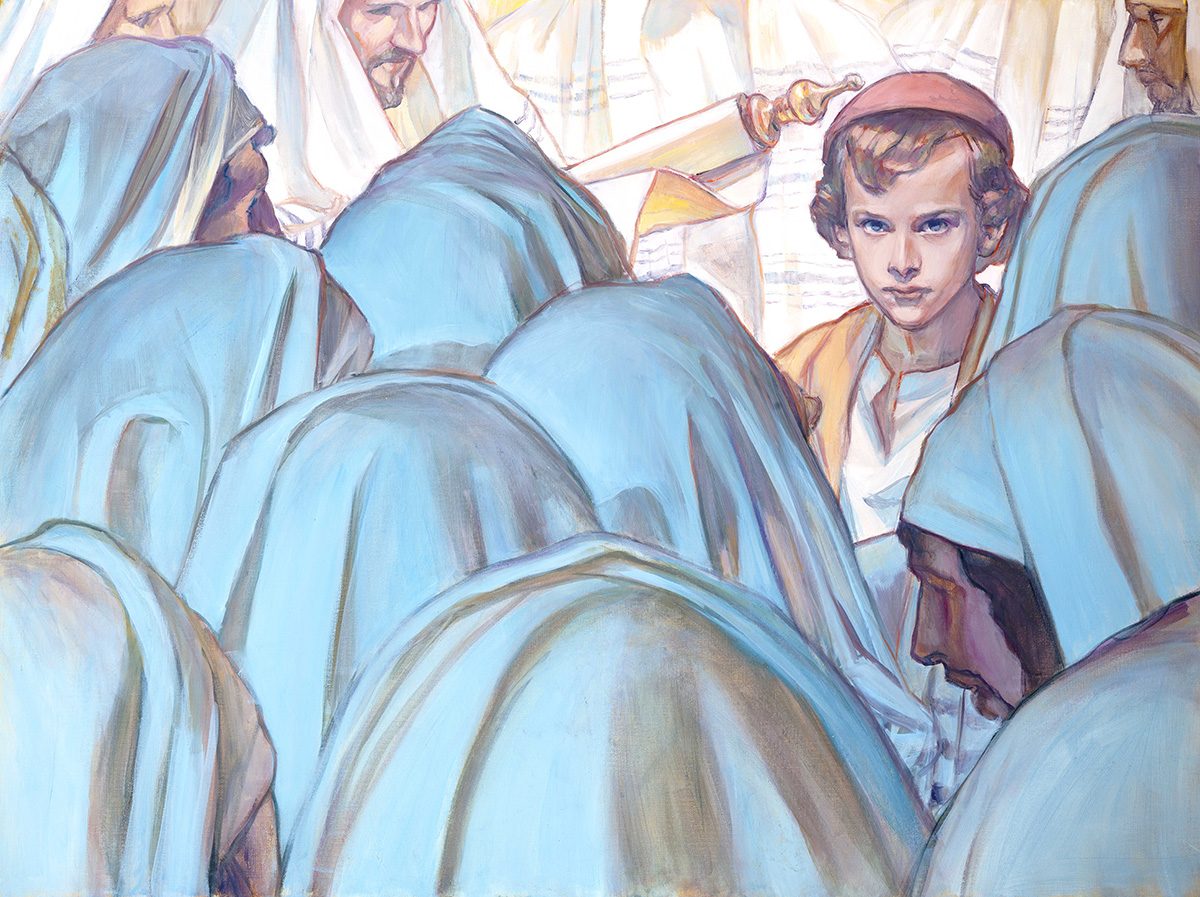
You have stated that as your boys grew up you thought about the Savior’s life differently when painting. Which painting from that series captures both your boys and a newly learned perspective about Jesus’s childhood?
Straight and True, Shouldering Burdens, About His Father’s Business (age twelve), Return from the Temple (age twelve) and Young Carpenter (age seventeen), capture my sentiments toward my boys receiving the mantle of the priesthood, as one son is age twelve and my seventeen-year-old son is approaching missionary age, just on the brink of manhood. It touches me and makes me tear up to think how quickly the years have gone by and to know that the Lord’s errand awaits them as they grow in wisdom and in stature and in righteousness.
I do not want to overlook that my older daughters are also in these paintings. I have two grownup daughters, ages twenty-two and twenty. A few of the older images were painted when they were still at home. Flight and Mary & Joseph are about motherhood and parenthood in general.
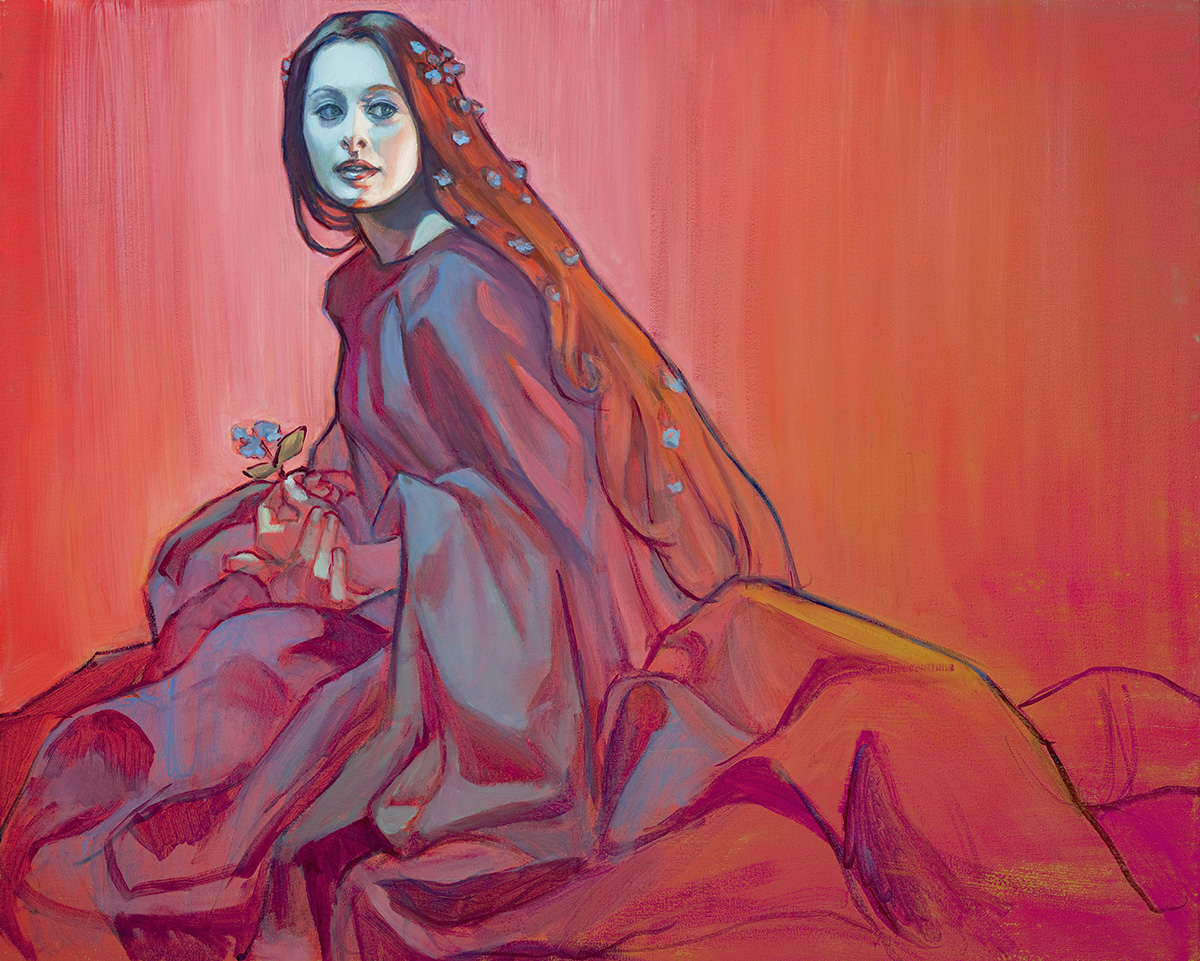
What do you hope your children learn from your life as a painter?
I hope that my two daughters, one who graduated in photography at BYU and the other an illustration major at BYU, will see the connection of letting the Spirit inform their art. I hope that whatever they do with their art, it can add luster and depth and beauty to God’s kingdom on earth, and that it can be a legacy for their families. I hope that they know they are a big source of the inspiration in my work. Likewise, I hope my boys, who are more musicians than visual artists, will feel that my art is a legacy to them. I hope they know that, despite my weaknesses, I have sought to do right.
I really do hope that my paintings will be a legacy not just for my kids but for the rest of my posterity to come. I imagine one saying in the future, “Lola Rose (Grandma Rose in Tagalog), yeah, she was a quirky one, but man … nobody can paint a blue donkey like her! And what is her thing with turquoise?”
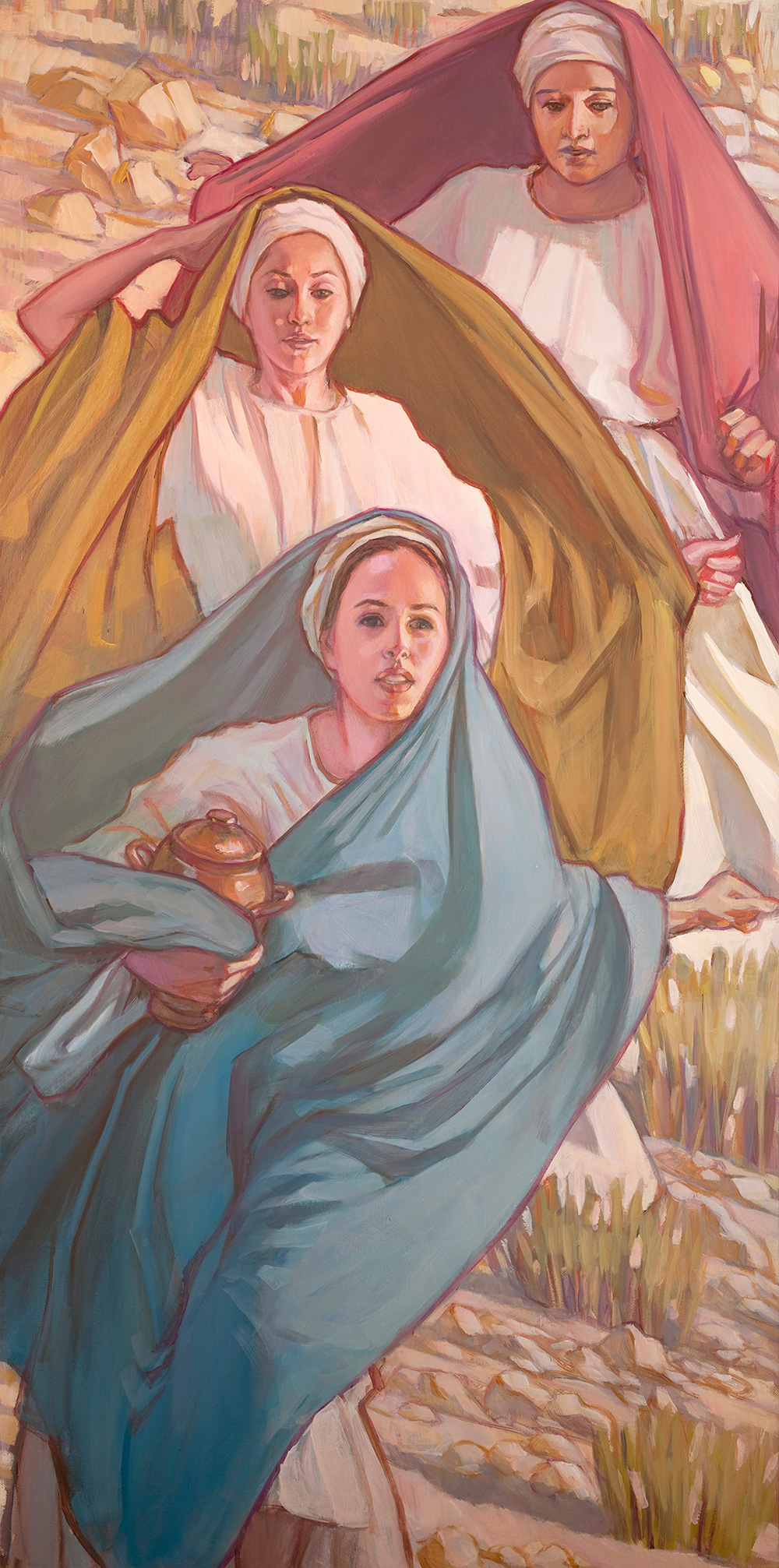
Will you share your thoughts on your painting First News of the Resurrection?
First News of the Resurrection is my homage to the women disciples who were the first witnesses of the resurrected Savior and were given the first charge to tell the news of the Resurrection to his disciples. This painting is a tribute to those sisters, faithful and seeking to honor the entombed Savior very early that Easter morning with embalming spices, sisters who like several others were key and valuable disciples in his early church. They are depicted running in haste, with consternation, with excitement, with joy, trying not to lose their footing on uneven ground. I tried to imagine having such a charge and what a privilege it would have been to have been among those choice sisters with that sacred opportunity.
Out of everything you’ve painted—which is your favorite and why?
I do not know if I have a favorite painting. There are lots of reasons why I like certain paintings, but I do not have a favorite.
Flight, for instance, was a breakthrough piece, still my most popular one to date. It was a breakthrough because it was that painting in which the expression of my contemporary graphic sensibilities made a huge leap and the painting was a graphic success, in my opinion. It is not my favorite piece, but I acknowledge the floodgates opening after that painting. Since then I have beefed up my edges a bit and I see that I could easily go back and put more edges in.
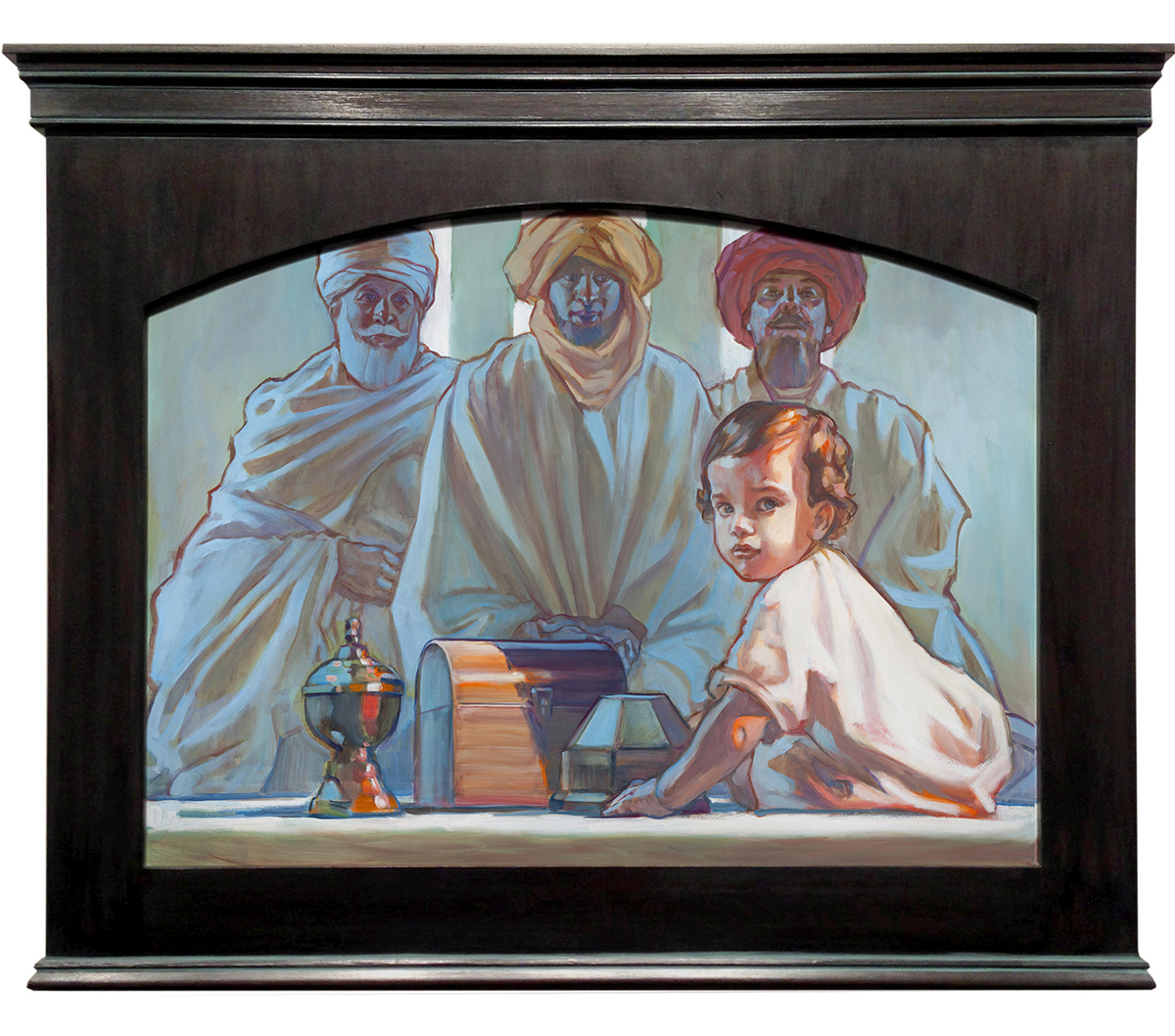
I think I really love Shouldering Burdens and Prophet, Priest and King. I loved painting Boy Christ’s face in those paintings. I also love that I learned to wrap turbans for the wise men from YouTube tutorials and that one of the wise men (the dude in the middle) is totally ad hoc, my UPS guy!
I love that in Young Prince in Egypt, my donkey model is really a twelve-inch plastic toy. And no, he is not really blue, he just got painted that way.
I love Mary and Elisabeth because it is dianthus pink and the clouds are yellow. The colors make me ridiculously happy. The painting happened very quickly, which also makes me very happy. The thistles have a great story. They are St Mary’s Thistle or the Milk Thistle, about which the legend suggests that the white veins in the leaves symbolize Mary’s mother’s milk as she fed her son while fleeing to Egypt.
I also love some of the paintings in my YW value series (On the Horizon). My favorite painting is often the one currently on the easel at the time.
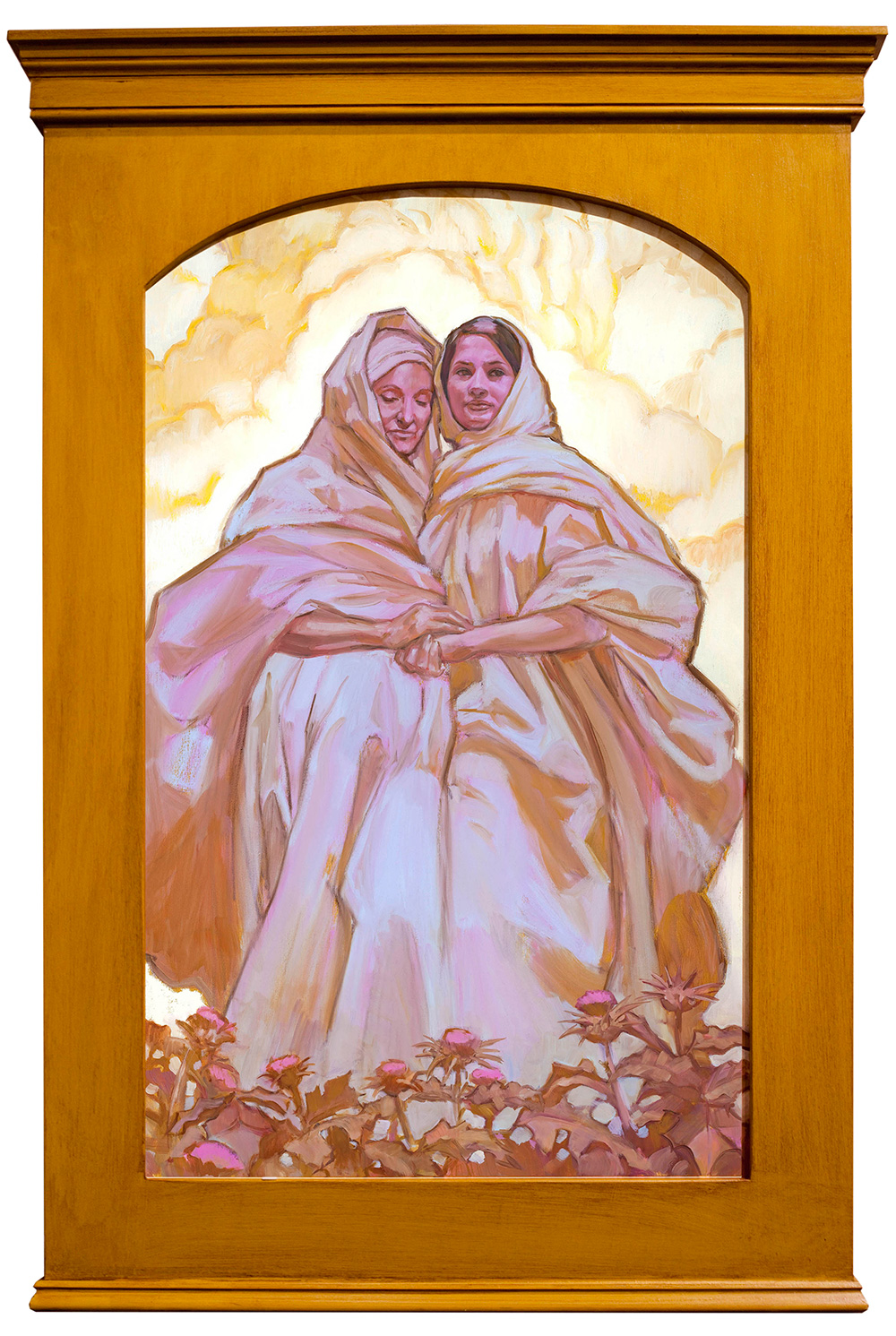
I love Mary and Son. That turquoise blue just really makes me happy. Color makes me happy. Can you tell?
I could go on, but I think I would bore you. A more interesting list would be the things I hate about some of my paintings, but I think that is not the question asked here. A much more entertaining list would be the funny bits of trivia surrounding the paintings … but I digress.
What would you like to have people leaving one of your exhibitions to know, think, feel or learn?
I cannot demand any person to feel or react a certain way toward any of my images. Viewing art and responding to it is a very personal thing. I hope, however, that having done my job as an artist, which is to convey, to internalize, and to draw upon some universal themes and metaphors, that perhaps there might be some who find resonance with them on some level. Mother-and-child is a universal theme, for instance, with which many can find a connection. But likewise, some might not react at all, and that is okay, too. Like I said, responding to art is a personal thing and everyone is responding to it at different levels, coming at it from different places. For instance, two people can read the same scripture and come up with two different points which struck them, all because their personal experiences are different. And for that reason, art is a wonderful thing.
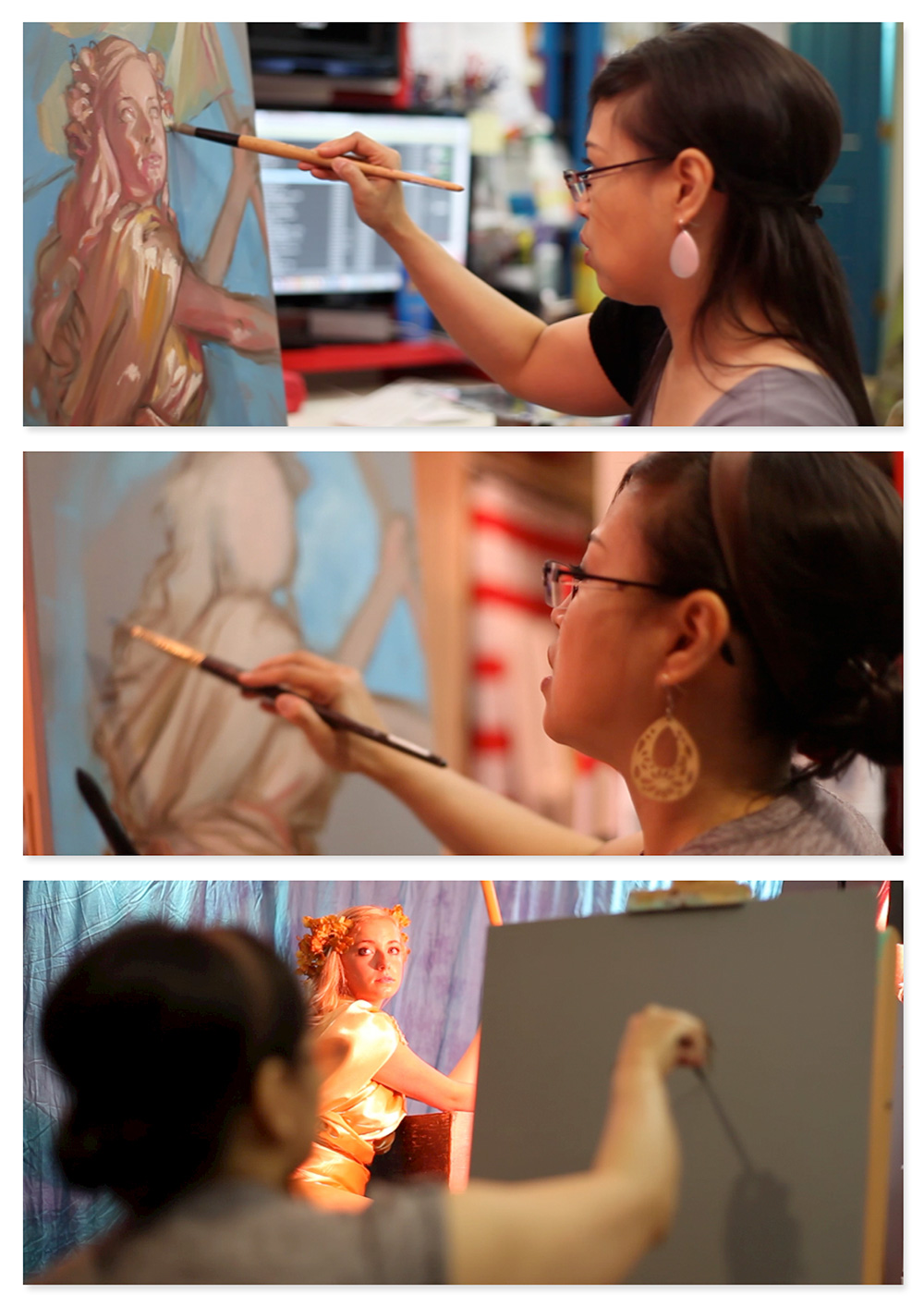
What would you like to share with other moms who would like to explore their artistic talents but are apprehensive?
I will give them the same advice that the Holy Ghost gave me, which is: While consecrating fully your talents to the Lord, it means putting your will on the altar and accepting his will. And if you embrace his will, and strive to have the Holy Ghost, you will never go astray with that talent.
For me it was ironic that relinquishing my will meant the opposite, gaining more opportunities that blew me away, opportunities so far out of my sphere to affect that I know without a shadow of a doubt that they came from Heavenly Father. Everyone’s path is different. You have to embrace that with which he blesses you, even if it is not exactly what you expect.
And secondly, do not compare yourself to the world, not to me, nor even to other LDS artists. You have a personal path and the Holy Ghost must show you that way—how he wants you to use that talent. Again, it may or may not be what you expect, but go with it. The Lord will not rebuke you for inquiring, for all gifts come from him. ❧
